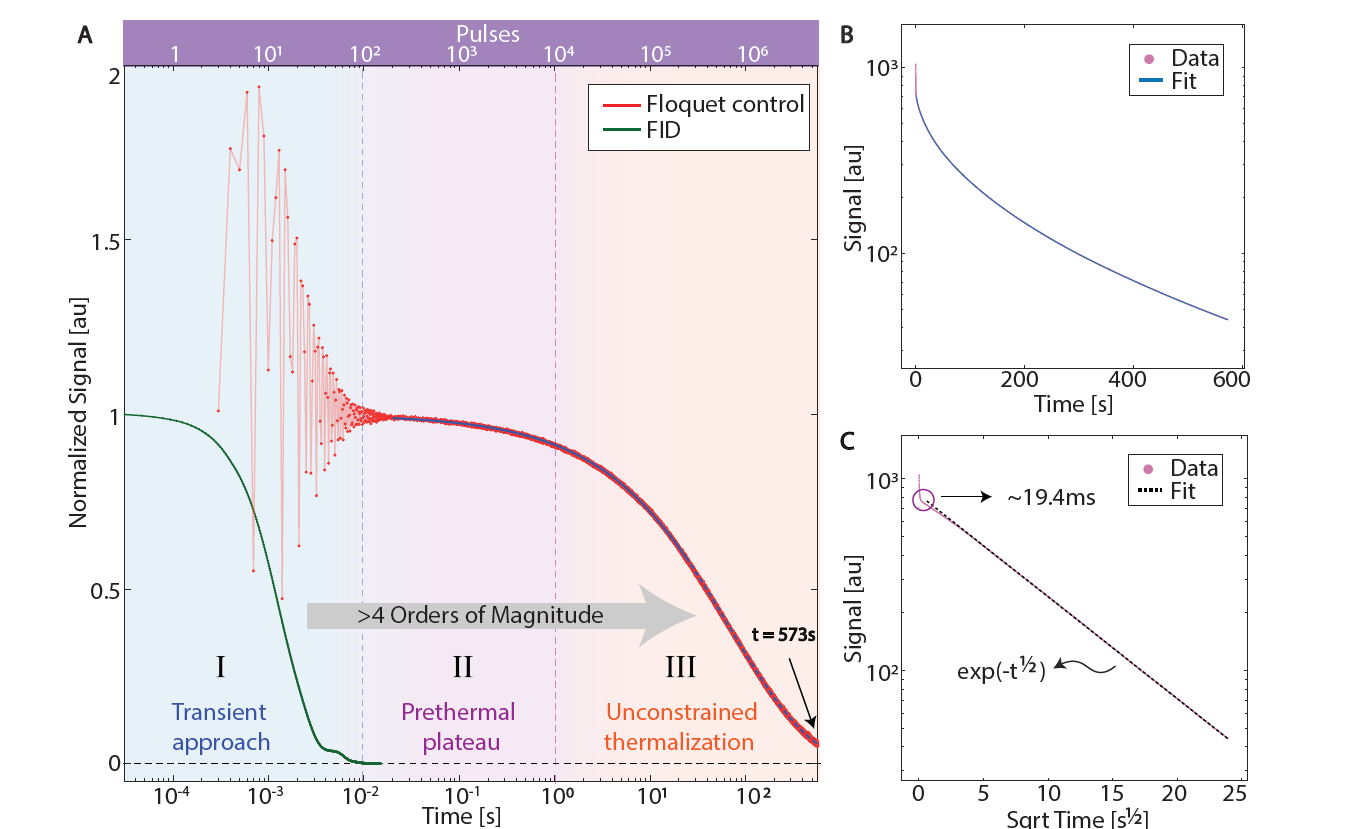39. Floquet prethermalization with lifetime exceeding 90s in a bulk hyperpolarized solid
W. Beatrez, O. Janes, A. Akkiraju, A. Pillai, A. Oddo, P. Reshetikhin, E. Druga, M. McAllister, M. Elo, B. Gilbert, D. Suter, A. Ajoy* [PDF]
arXiv:2104.01988 -- Phys. Rev. Lett. 127, 170603 (2021).
Selected as Editors Suggestion by PRL
Spotlighted by Physics at PRL: Delaying Thermalization in a Periodically Driven System
Spotlighted in Nature Physics: Keep the spins spinning
Abstract:
We report the observation of long-lived Floquet prethermal states in a bulk solid composed of dipolar-coupled 13C nuclei in diamond at room temperature. For precessing nuclear spins prepared in an initial transverse state, we demonstrate pulsed spin-lock Floquet control that prevents their decay over multiple-minute-long periods. We observe Floquet prethermal lifetimes 𝑇2’≈90.9 s, extended >60 000-fold over the nuclear free induction decay times. The spins themselves are continuously interrogated for ∼10 min, corresponding to the application of ≈5.8 ×10^6 control pulses. The 13C nuclei are optically hyperpolarized by lattice nitrogen vacancy centers; the combination of hyperpolarization and continuous spin readout yields significant signal-to-noise ratio in the measurements. This allows probing the Floquet thermalization dynamics with unprecedented clarity. We identify four characteristic regimes of the thermalization process, discerning short-time transient processes leading to the prethermal plateau and long-time system heating toward infinite temperature. This Letter points to new opportunities possible via Floquet control in networks of dilute, randomly distributed, low-sensitivity nuclei. In particular, the combination of minutes-long prethermal lifetimes and continuous spin interrogation opens avenues for quantum sensors constructed from hyperpolarized Floquet prethermal nuclei.

